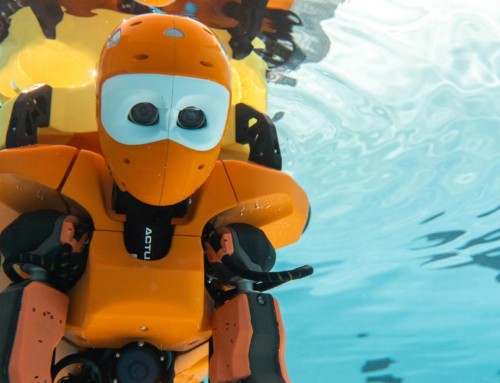[ad_1]

A number of nations are experimenting with their own ground robots (Picture: Royal Navy).
By David Hambling, technology expert
In a notable first, armed Unmanned Ground Vehicles (UGVs) supported Royal Marines in the recent Commando Warrior exercise.
The British military has a long history of pioneering UGVs.
The Wheelbarrow, the world’s first bomb-disposal robot, based on the chassis of an actual motorised wheelbarrow, was used in Northern Ireland in 1972.
But while armed aerial drones like the Reaper are now commonplace, the Ministry of Defence has been cautious about arming ground robots.
The exercise at Tregantle Beach, in Cornwall, which Alpha Company of 40 Commando and 1 Assault Group Royal Marines (1AGRM) carried out with two armed robotic vehicles, was something of a milestone.
The military has already tested remote-controlled armoured vehicles.
The robotic vehicles are known as Titan by QinetiQ, who developed them in conjunction with Estonian company Milrem Robotics.
The original version is known as THeMIS, short for Tracked Hybrid Modular Infantry System.
It is a vehicle about the size of a golf cart at 2.4m long by 2m wide, and weighing just under 1.5 tonnes.
There are two versions – one with a hybrid diesel/electric engine and the other is purely electric.
The top speed is only 20 kph, but Titan has plenty of power to handle rough terrain, being able to climb a 60% slope. It copes easily with sand, snow and mud, and can ford up to 60 cm of water.

Titan has multiple cameras and infra-red vision, and is controlled via a ruggedized tablet handset.
There are plenty of other UGVs around, but what distinguishes this one, according to Milrem CEO Kuldar Väärsi, are two key factors: safety and security.
There have always been serious concerns about unmanned vehicles operating around people, and the THeMIS was specifically designed with this in mind.
Mr Väärsi said:
“We have added several fail-safe solutions, hardware and software based, to avoid any accidents and to guarantee that the UGV is safe to use for soldiers.”

Another concern is security and the risk that a communications link will either be jammed or hacked into. Mr Väärsi noted:
“All technology that can be jammed will be jammed.”
He explains the robots use military-grade radios designed to work in a jamming environment, but they do not simply assume it will work.
“Even more important is to develop more efficient and capable autonomy. That way jamming will not affect the basic functions of system.”
This means the robots are capable of driving themselves and do not rely on having a connection to a human controller the entire time, though weapons can only be fired by the operator.
An advanced cyber-security suite ensures that the control system cannot be hacked.

The British Army tested the transport version of Titan for front-line logistics last year. The Last Mile Resupply Challenge was carried out at Salisbury and seeing how easily robots could bring ammunition right to the front line.
Rather than cargo though, THeMIS can use its 750-kilo carrying capacity for a weapons turret.
Several different versions are available with turrets from a variety of international manufacturers reflecting how many countries have taken an interest. These offer various weapon combinations, including 7.62mm medium machine guns and .50 heavy machine guns as well as guided anti-tank weapons such as the Javelin missile.
Titan is not seen as just a stand-alone system – one of its strengths is the ability to work in co-operation with other unmanned systems.
In Commando Warrior, the robots were used alongside small reconnaissance drones, used to locate targets. Mr Väärsi says that in future they hope to have a seamless hand-off, so the operator can get a target in the crosshairs of a drone, and the ground robot will automatically rotate its turret to aim at the exact spot indicated.

Going forward, such robots will become integrated more closely into the squad. The goal is to have them controlled more like another human than a robot, able to respond to voice commands and gestures.
For example, being able to give a ‘follow me’ order is far simpler than having to program a route in advance.
Other nations are also experimenting with their own armed ground robots. Russia in particular has taken an interest in moving UGVs to the front line, and deployed a number of armed Uran-9 unmanned vehicles in action in Syria last year.
These apparently performed poorly, largely due to issues with the radio communications. The makers say they have learned from this and that all the identified problems have been fixed, and the Russian army is set to received production vehicles this year.
Exercises like Commando Warrior should identify any problems with Titan before it goes into action. In the exercise, the Royal Marines landed covertly on the beach, climbed cliffs, assaulted an ‘enemy’ position with fire support from the UGVs, and withdrew safely.
Commando Warrior explores how the Future Commando Force might operate by taking advantage of the latest technology and integrating robots into fighting units is still a distant prospect.
It may still be some years before Marines have droids for fire support – but the day might be closer than you think.
[ad_2]
Source link












Leave A Comment
You must be logged in to post a comment.